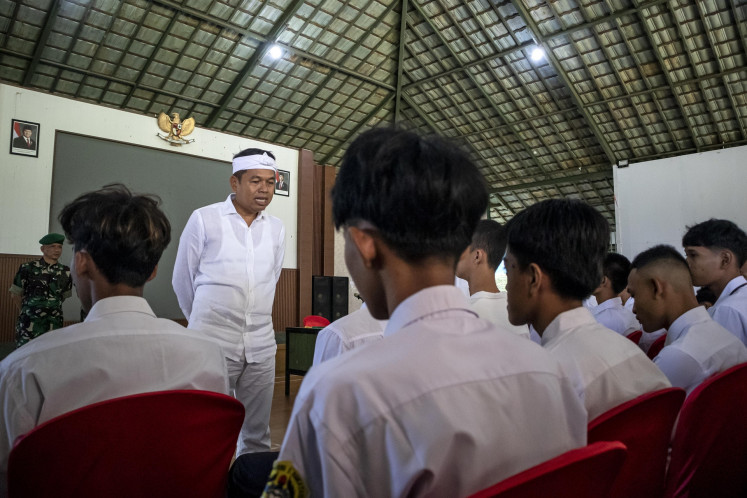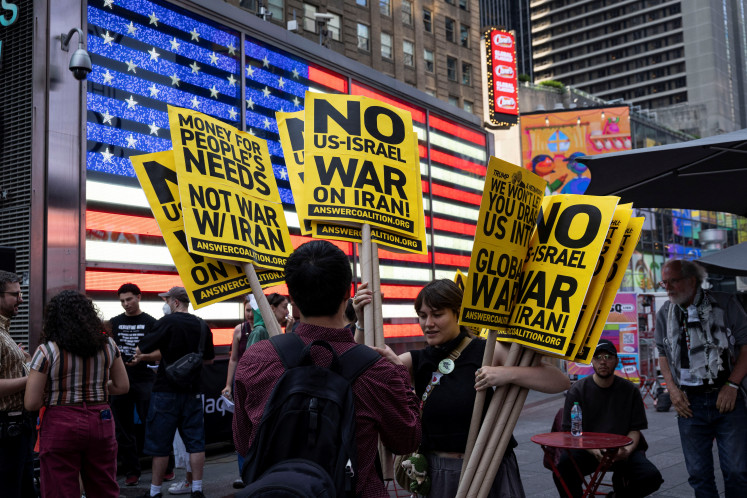Harbin Asia's winter Wonderland
Winter Wonderland: A snow castle stands firm in the Sun Island exhibition area at the Ice and Snow Festival in Harbin, China
Change text size
Gift Premium Articles
to Anyone

Winter Wonderland: A snow castle stands firm in the Sun Island exhibition area at the Ice and Snow Festival in Harbin, China.
It is painfully cold in Harbin, the renowned ice city of Heiongjiang, the northernmost province in China. But, once you've spent a day wandering among the color-illuminated ice sculptures on display during the annual Ice and Snow Sculpture Festival, mouth-open in awe, you'll begin to think subzero pains might be worth enduring.
Bordering Russia and North Korea, Harbin, a Manchu word meaning 'a place for drying fishing nets', grew from a small rural settlement on the Songhua River to become one of the largest cities in Northeast China.
It boasts the most bitterly cold winters among major Chinese cities and as my visit saw the temperature plunge to minus 30 degrees Celsius, I cannot say that I have witnessed an exception to this rule.

Ice city: Castles and citadels made entirely from ice are seen at the Ice and Snow Festival. The festival, the largest of its kind in the world, is held annually every winter from January to mid-March.
After a half-day walk around the city, I was overwhelmed. The pain in my fingers and toes turned them numb and, perhaps as a reflection of my misery, the bottled green tea that I had been lugging around inside my bag transformed into a bottle of solid iced tea.
For the record, 21st century gadgets also fail to cope with subzero temperature. I fast learned that if one carries a Samsung or Apple cell phone around outside for an extended time (here that means more than 15 minutes), its lithium battery will freeze.
Such weather does have its plus side. Every year between January and mid-March, millions of tourists in China and the rest of the world brace the extreme cold to visit the spectacular Ha-erbin guoji bingxue jie ' the granddaddy of ice sculpture exhibitions.
Since its inaugural event back in 1985, the festival has remained the biggest in its kind in the world.
Dozens of ice artists descend upon Harbin to take part in what is arguably the world's most sophisticated ice festival, a complex sculpture site which takes approximately 10,000 local Chinese workers two weeks to build.
The result of their hard work is a breathtaking winter wonderland that guarantees a sense of enchantment for both children and grown-ups alike.
For me, having spent my life in the tropics and thus, having only seen snow while watching run-of-the-mill Hollywood Christmas movies, attending the festival was a realization of a childhood dream.
Here, children descend on curvy slides from frosty castles with minarets towering as high as 40 meters, all glowing in LED-illuminated color. This is a real-life fairytale-view in which all the buildings' elements, from ladders and bridges, to windows and acropolis fences have been made entirely from ice.
Among this, festival staff disguised in Santa Claus outfits offer tourists a tour around the festival area in a Christmas-style carriage pulled by a horned deer for 100 yuan (Rp 200,000).
Harbin's charm extends beyond ice festival walls. Formerly the center of a power struggle between Russia, Japan and China, Harbin exudes a Sino-European atmosphere that is unlikely to be found among other cities in China.

Standing tall at the heart of the city is the ancient Saint Sophia Cathedral, a Russian Orthodox Church that survived the rampant ransacking and vandalism that occurred throughout China during the Cultural Revolution of the 1960s.
Meanwhile, Zhongyang Street, a favorite shopping area, offers antique, hundred-year-old buildings with European façade, leaving one to forget Harbin is located in China, while restaurant and storefront signs in Russian, found easily in the surrounding area, add to the confusion.
Street musicians and sidewalk entertainers amuse sightseers as do body-size ice statues in the form of animals, cartoon characters and musical instruments such as a piano.
'This city reminds me of Paris, given the architecture of its buildings and its music-filled streets,' mused Biondi Sima, an Indonesian national who studied in the French capital for a year, as he treaded Zhongyang Street beside me with his teeth chattering.
He nods as I remind him that Harbin had been nicknamed 'Oriental Paris' or the 'Oriental Moscow'.
'Of course, Paris is not this cold,' he replied.
' Photos by Putera Satria Sambijantoro









